This is one in a series of posts on the Fujifilm GFX 100S. You should be able to find all the posts about that camera in the Category List on the right sidebar, below the Articles widget. There’s a drop-down menu there that you can use to get to all the posts in this series; just look for “GFX 100S”. Since it’s more about the lenses than the camera, I’m also tagging it with the other Fuji GFX tags.
In the previous post, I looked at the off-axis MTF50 and microcontrast of the Fuji 45-100 mm f/4 GF zoom. In this post, I’ll do the same for longitudinal chromatic aberration (LoCA).
Here’s the test protocol:
- RRS carbon fiber legs
- C1 head
- 45, 60, and 100 mm focal length
- Target distance as per the table below
- ISO 100
- Electronic shutter
- 10-second self timer
- f/4 through f/11 in whole-stop steps
- Exposure time set by camera in A mode
- Focus bracketing, step size 1, 120 to 60 exposures
- Initial focus well short of target
- Convert RAF to DNG using Adobe DNG Converter
- Extract raw mosaics with dcraw
- Extract slanted edge for each raw plane in a Matlab program the Jack Hogan originally wrote, and that I’ve been modifying for years.
- Analyze the slanted edges and produce MTF curves using MTF Mapper (great program; thanks, Frans)
- Fit curves to the MTF Mapper MTF50 values in Matlab
- Correct for systematic GFX focus bracketing inconsistencies
- Analyze and graph in Matlab
First, I’ll compare the shift in the red raw chanel with respect to the white balanced raw channel, for the 45-100 set at 45 mm and the 45 mm f/2.8 GF lens.
The above plots the shift of the red raw image plane (on the sensor side of the lens) compared to the white-balanced raw plane. Negative displacement is front focusing, and positive displacement is back focusing.
The same thing for the blue raw channel:
Now the 45-100 at 60 mm vs the 63 mm f/2.8 GF lens:
The shifts are in opposite directions for the two lenses.
The blue channel shift against the 63:
Now the 45-100 at 100 mm versus the 110/2 GF:
The 110 has hardly any red LoCA.
The blue LoCA in the zoom is much worse than the prime.
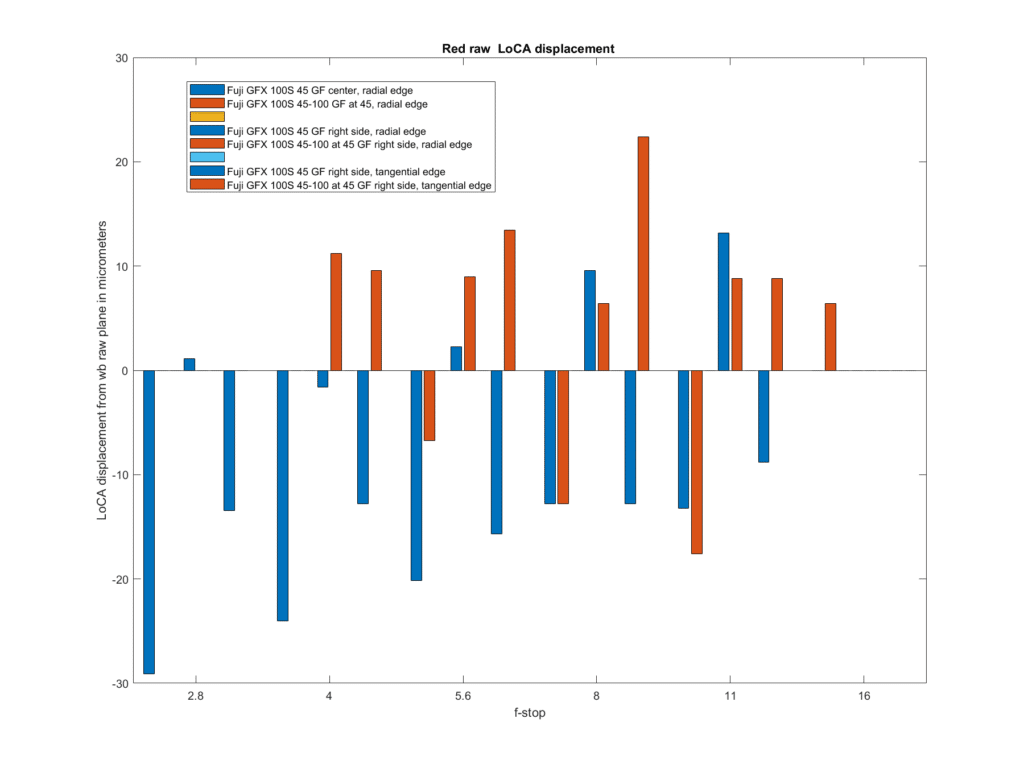
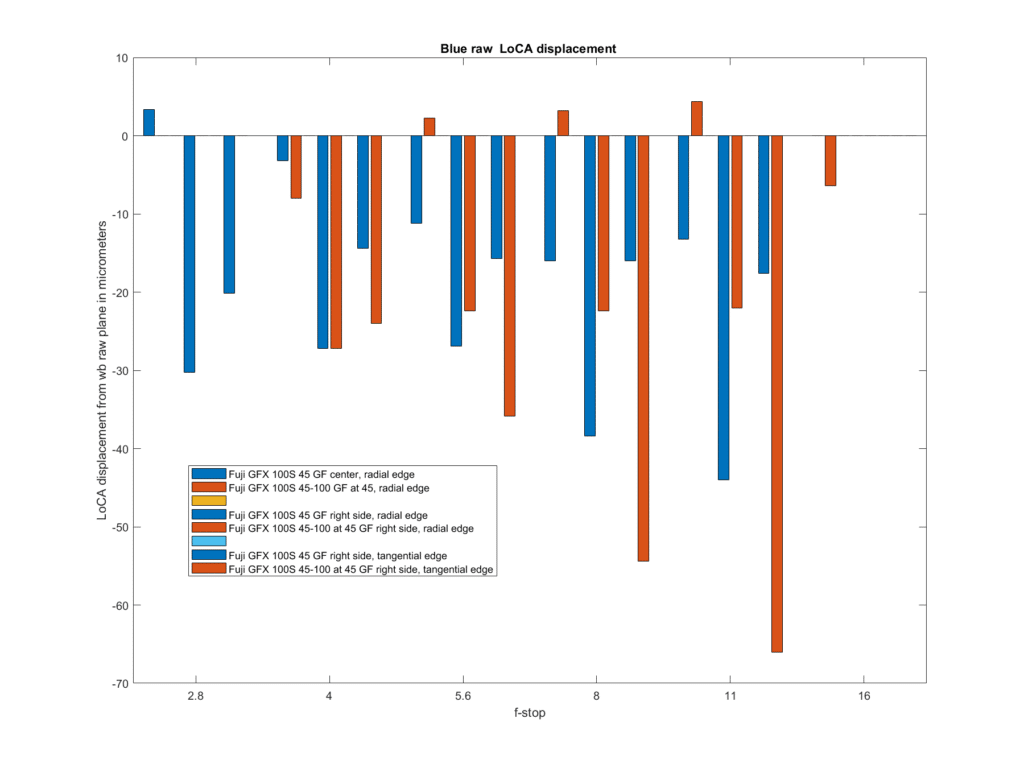
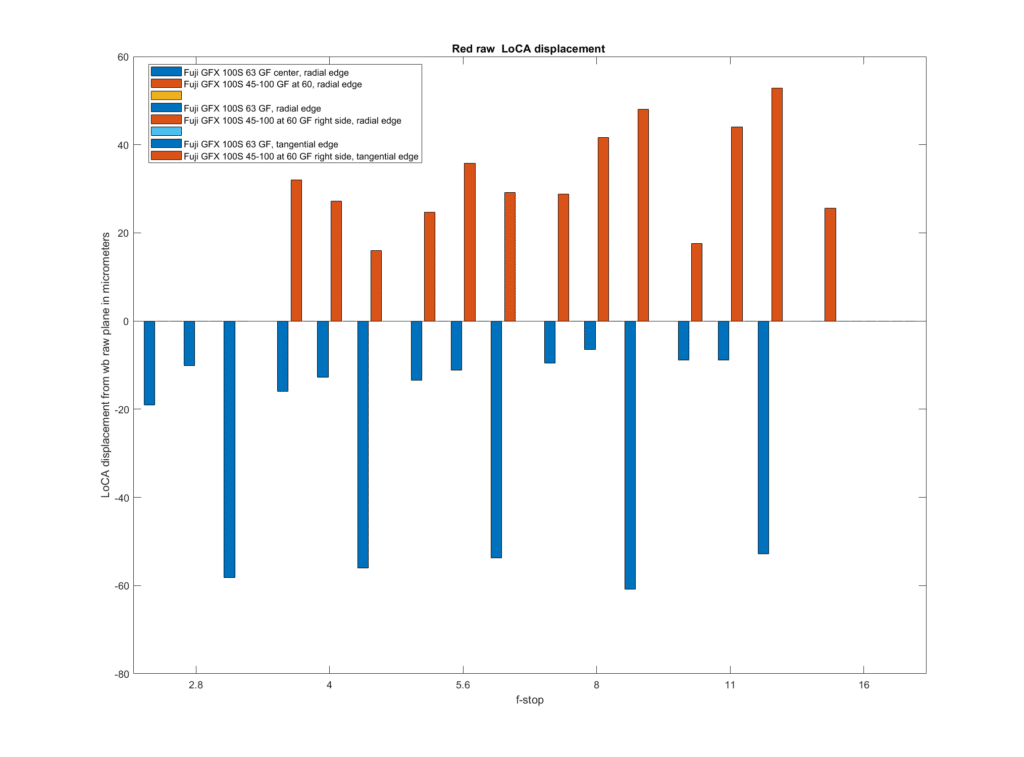
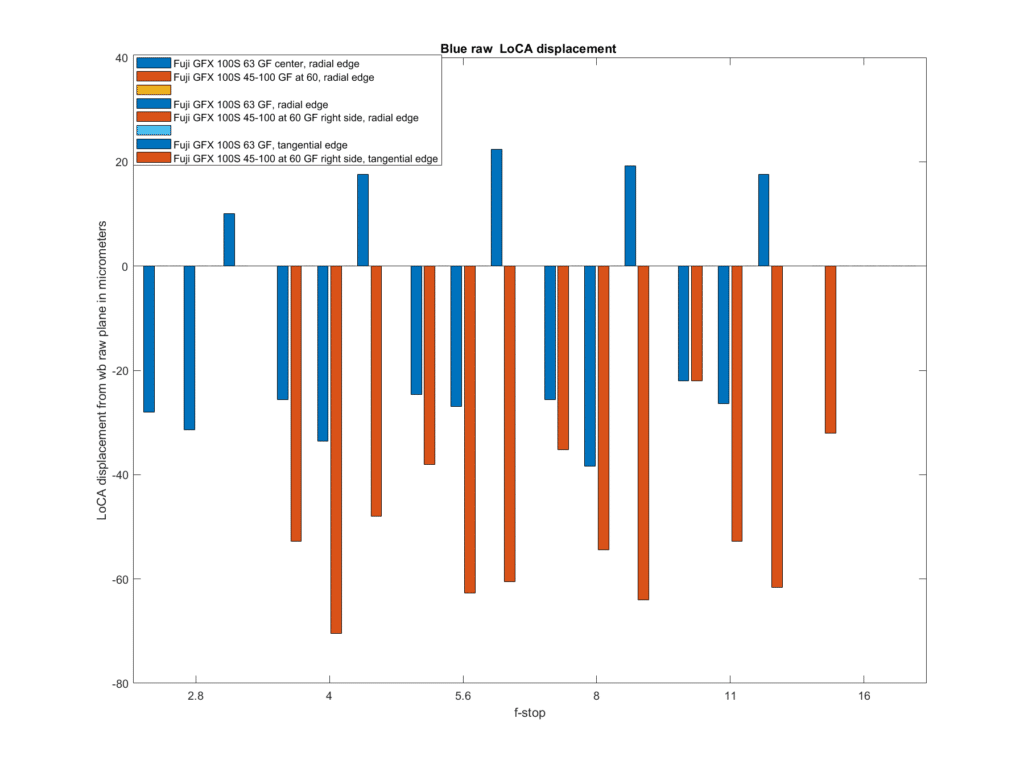
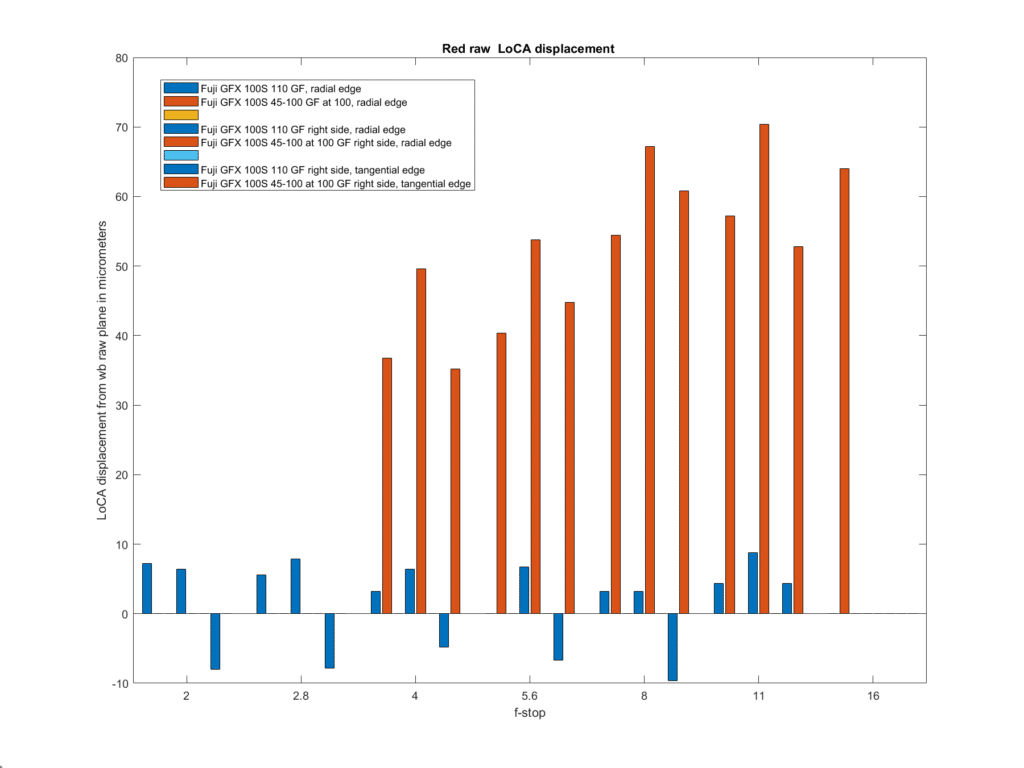
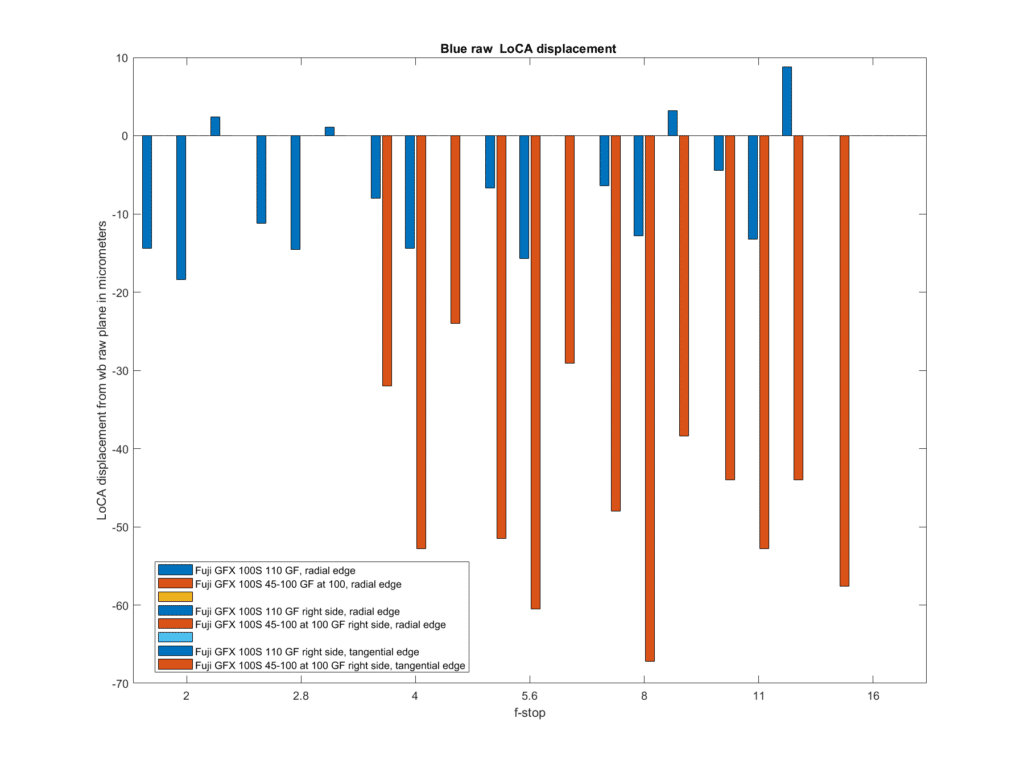
Leave a Reply